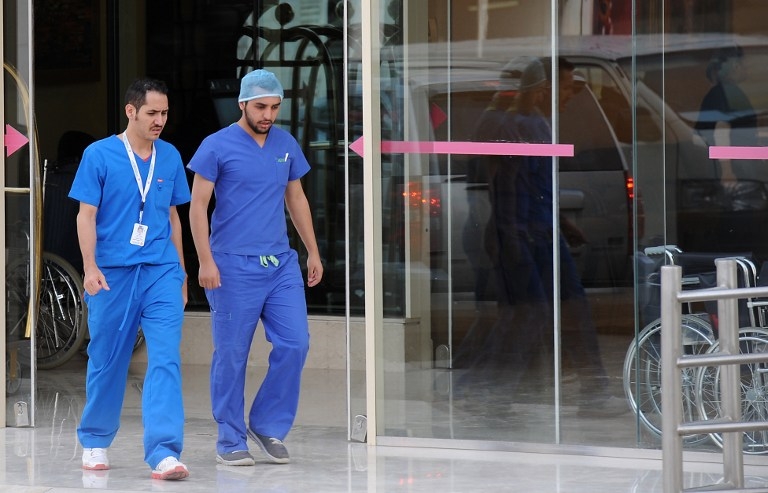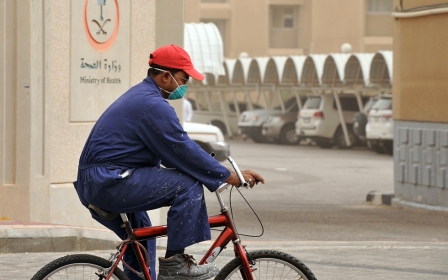Breakthrough in MERS research, as Iran reports first death

An international team of scientists say they have identified a compound that can fight coronaviruses, responsible for the SARS and MERS outbreaks, which currently have no cure.
Coronaviruses affect the upper and lower respiratory tracts in humans. They are the reason for up to a third of common colds.
A more severe strain of the virus, thought to have come from bats, triggered the global SARS (Severe Acute Respiratory Syndrome) epidemic in 2002 that killed nearly 800 people.
The Middle East Respiratory Syndrome (MERS) is a new strain discovered in Saudi Arabia in 2012 and thought to have originated in camels.
More deadly but less contageous, it has so far killed 193 people across 636 confirmed cases.
But now a team of scientists led by Edward Trybala from the University of Gothenburg in Sweden, and Volker Thiel from the University of Bern have discovered a compound called K22, which appears to block the ability of the virus to spread in humans.
They first noticed that K22 was able to combat a weak form of coronavirus that causes mild cold-like symptoms, and went on to show that it can fight more serious strains, including SARS and MERS.
In an article for specialist journal "PLOS Pathogens", the scientists explained that the virus reproduces in the cells that line the human respiratory system.
MERS, for which no cure currently exists, is known for destroying the lungs and kidneys.
Along with Saudi Arabia, MERS has also been reported in Qatar, the United Arab Emirates, Tunisia, Jordan, Egypt and Oman.
It is presumed that long-term physical contact with persons carrying the virus can lead to infection.
The virus takes over the membranes that separate different parts of human cells, reshaping them into a sort of armour around itself in order to start its production cycle.
But K22 acts at an early stage in this process, preventing the virus from taking control of the cell membranes.
"The results confirm that the use of the membrane of the host cell is a crucial step in the life-cycle of the virus," the researchers wrote.
Their work shows that "the process is highly sensitive and can be influenced by anti-viral medications."
They said the recent SARS epidemic and MERS outbreak mean there should be urgent investment in testing K22 outside the laboratory and developing medicines.
More deaths in Saudi and Iran
A woman has died from the MERS coronavirus in Iran's southeastern province of Kerman, the Islamic republic's first victim, media reported Thursday.
The 53-year-old woman was one of two sisters the health ministry said Wednesday had tested positive for the illness.
"Despite all the efforts made by the medical staff, the patient who was infected by the coronavirus passed away," Mohammad Mehdi Gooya, transmissible diseases unit chief, told Fars news agency.
The patient, suffered from high blood pressure and her immune system could not fight the virus, Gooya added.
Gooya said the second sister was in good condition and had been discharged from hospital.
Meanwhile, Mehdi Shafiei, head of the Kerman disease prevention unit, was quoted by Mehr news agency as saying there are six other suspected cases in Kerman.
Iran's first reported cases come just a month before the Muslim holy fasting month of Ramadan, when pilgrim numbers are expected to rise sharply.
Saudi Arabia on Wednesday also reported six new deaths from MERS bringing the total number of MERS-related fatalities in the kingdom to 186 since 2012.
In a statement, the Health Ministry said that one more person had contracted the virus, bringing the total number of infections in the country to 565 since September 2012, when the virus first appeared.
According to the ministry, another four people had recovered after contracting the virus.
The latest reports bring the total number of cases registered in the country this month to 194, 75 of which have led to fatalities.
Middle East Eye propose une couverture et une analyse indépendantes et incomparables du Moyen-Orient, de l’Afrique du Nord et d’autres régions du monde. Pour en savoir plus sur la reprise de ce contenu et les frais qui s’appliquent, veuillez remplir ce formulaire [en anglais]. Pour en savoir plus sur MEE, cliquez ici [en anglais].




